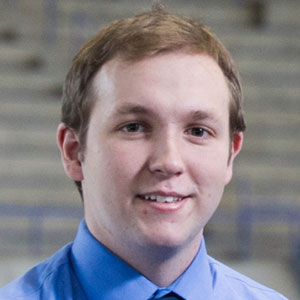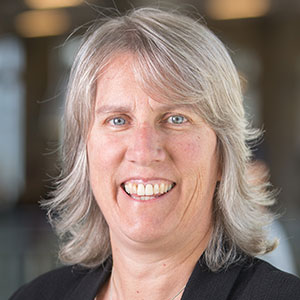University of Calgary Faculty of Kinesiology researchers guiding policy on sport concussions
Ash Kolstad was 12 years old when he suffered a concussion playing ice hockey. The recovery was difficult. He spent hours lying awake in his dark bedroom. He couldn't sleep and would be awake for days. He missed a year of school.

Ash Kolstad
Former hockey player
That was eight years ago. Today, Ash still suffers from persistent post-concussion syndrome. He has a constant headache. He has trouble concentrating.
Ash's experience as a concussion survivor sparked his interest in helping others avoid the damaging effects of these brain injuries.
Ash just finished his third year of his undergraduate program in the Faculty of Kinesiology at the University of Calgary and has set his sights on pursuing graduate studies in concussion and injury prevention research.
He's gaining valuable research experience as a member of Dr. Carolyn Emery's team at the University of Calgary's Sport Injury Prevention Research Centre, one of nine research centres internationally supported by the International Olympic Committee.
"I want to help people with concussions get through the recovery process and to help them manage not only the physical effects, but also the mental and social aspects," says Ash, who in addition to his work with Dr. Emery is contributing to other research that aims to better understand the experience of concussion patients.
Dr. Emery and her colleagues in the Sport Injury Prevention Research Centre are helping shape sport policies that prevent concussions and improve recovery both in Canada and worldwide.
Their work prompted Hockey Canada in 2013 to ban body checking in Pee Wee ice hockey (11-12 years). In a study recently published in the British Journal of Sports Medicine, the team has demonstrated that this body checking policy change has resulted in a 64 percent reduction in concussion risk and a 50 percent reduction risk in injuries overall.
As a result of these findings, local and provincial associations have extended the body checking ban to non-elite levels of Bantam and Midget divisions (13-17 years).
The team is also trying to understand the effect of the ban on the game.
Ash is helping with this work by spending hours in local hockey rinks video recording games where body checking is allowed and where it is not. He'll spend this summer analyzing the video footage to identify differences in offensive game performance of players.
This research is important because it will provide evidence to respond to coaches and parents who feel that learning to body check is essential for preparing young players for elite levels of hockey.
The work of Dr. Emery and her team is influencing the highest levels of sport.

Dr. Carolyn Emery
PT PhD, Associate Dean (Research)
Faculty of Kinesiology
University of Calgary
In March, they presented the findings of the BJSM study at a meeting of the International Olympic Committee World Conference on Prevention of Injury and Illness in Sport in Monaco.
The team has also played a lead role in the development of the Berlin Consensus Statement on Concussion in Sport with Dr. Emery and her colleagues Dr. Willem Meeuwisse and Dr. Kathryn Schneider serving on the expert panel. The statement provides guidance to physicians and other health care professionals on the prevention, diagnosis, and management of concussions among athletes.
Dr. Emery has received funding for her research from the CIHR Institutes of Human Development, Child and Youth Health and Neurosciences, Mental Health and Addiction, as well as the Hotchkiss Brain Institute, as part of the National Canadian Traumatic Brain Injury Initiative.
"Concussion is a major issue in sport," says Dr. Shoo Lee, Scientific Director of the CIHR Institute of Human Development Child and Youth Health. "These injuries can have serious and lasting effects on the health of children and youth. Dr. Emery shows how researchers can have a significant impact on sport policy and guidelines. Her work is helping prevent injuries and keeping children and youth safe on the playing field, so they enjoy the physical and social benefits of participation in sport."
Despite the positive impact of their research, Dr. Emery understands there's still a lot more work to be done to better diagnose and treat concussions, to understand the effect growth and development on the brain and concussion recovery in children, and to determine exactly when it's safe for an athlete to return to play.
That's why she continues work with community partners to promote concussion prevention strategies such as protective gear, rule changes, and education programs. She and her colleagues are also looking to inform concussion and injury prevention programs in school physical education programs and other community sports such as soccer.
Meanwhile, Dr. Emery has a clear message for coaches and parents: "If you suspect a player or child has suffered a concussion, they should not continue playing. They should consult a physician and follow evidence-informed return to play guidelines.";
That's good advice. Because while sports are fun, concussions are serious business.
- Date modified: